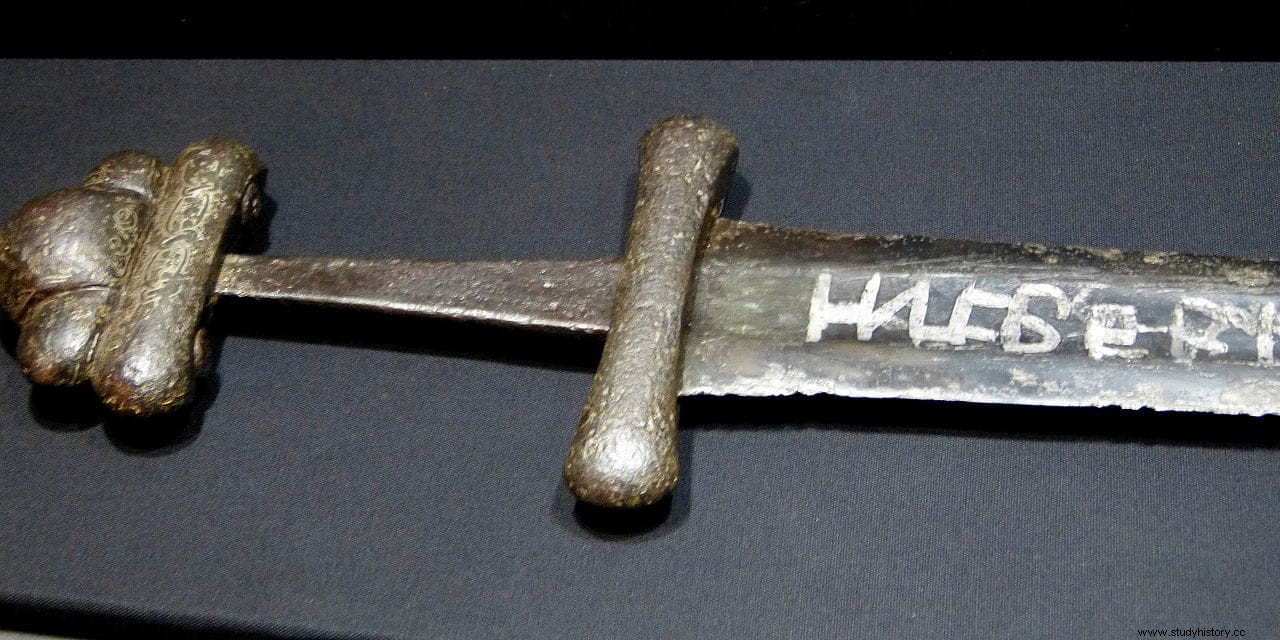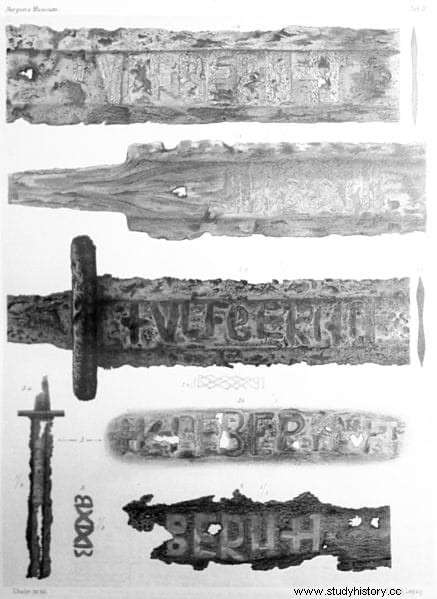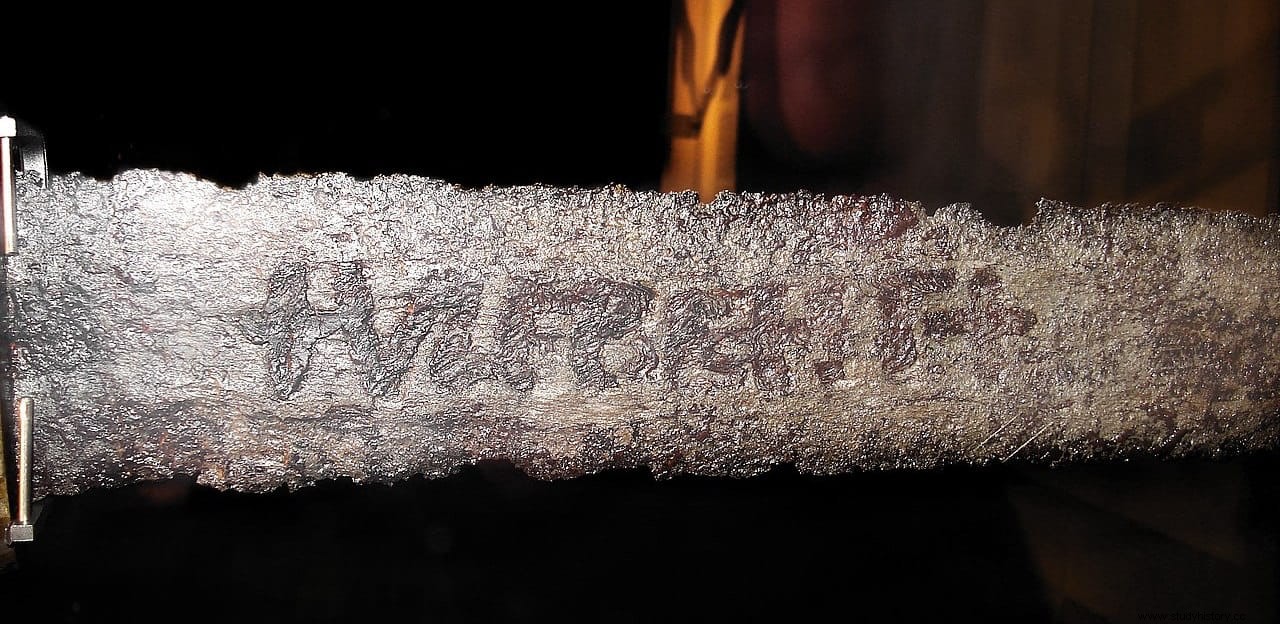Between the 9th and 11th centuries, a type of sword with a factory mark that gave it a symbol of quality, both for the steel with which it was made and its origin, became popular in northern Europe and Scandinavia.
They are called Ulfberht swords because they all bear the inscription +VLFBERHT+ or variants of it, an outspoken name used perhaps at first by a single manufacturer, then perpetuated as a mark of quality.

These swords stand as the bridge between the ancient Viking sword and the later medieval knightly sword, and have a broad, flat blade with an average length of 80 centimeters. They were made using several pieces of metal of different composition, in a process commonly called Damascus steel. .
The best were made from steel imported from Central Asia, with more than 150 examples found in deposits throughout northern Europe, especially in Norway, and even a few examples as far away as Bulgaria.

The origin of its manufacture is traced to Austrasia, the central region of the Frankish kingdom located in what is now the German Rhineland. The Vikings considered them a highly regarded item, as well as a reliable and effective weapon, which is why so many have been found in Scandinavia.
However, recent studies of specimens preserved in museums and private collections revealed a surprising fact. Many of the Ulfberht swords preserved are false. They are made with low quality steel and even iron and with up to three times less carbon content, although they carry the same inscription to confuse or mislead the buyer.
Thus, the Viking who acquired one of these forged swords was unable to distinguish it from an authentic one, since at first glance they were practically identical in everything and were forged with the most advanced metallurgy techniques. The difference was only revealed, fatally, at the moment of entering into combat, when when the sword collided with another authentic one, the false one shattered.
That is why thousands of fragments of these fakes, which were made by local craftsmen in northern Europe, have turned up at battle sites. The real Ulfberhts They usually appear in the bed of rivers near old towns.

In the 11th century, the supply of Central Asian steel through Russia was interrupted, which caused the number of counterfeits to increase considerably from that moment on.
